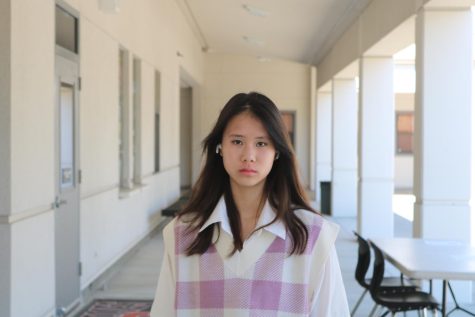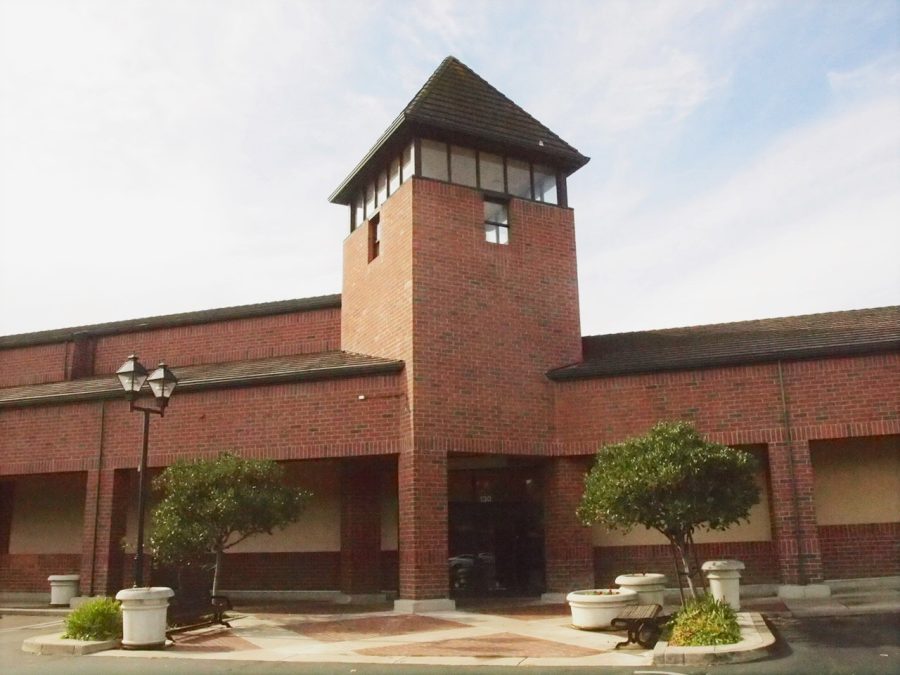Locals fight against Nob Hill developments
Market Place prepares to be taken over by apartments
The Nob Hill shopping complex lies empty and bare. The building is to be replaced by housing apartments.
As the San Ramon City Council moves forward with the planning of the Nob Hill apartment complex, San Ramon citizens continue to show their opposition of the project.
The project, originally proposed in early 2021, immediately faced backlash from many residents of surrounding areas because of the destruction of some retail space in the Marketplace shopping center.
Approximately 57,000 square feet of space in the Marketplace, including the Nob Hill supermarket, is planned to be demolished in order to make room for a housing complex, which consists of 40 standalone market-rate units, according to the San Ramon Planning Commission website.
The two main concerns of those opposing the proposal are that the demolition of Nob Hill takes away access to a fully functioning grocery store for those in the surrounding neighborhoods, and that more developments will start taking away from San Ramon’s suburban vibe.
“We would like to see the Marketplace designed as a real center with a full service grocery store,” Joyce Car, a San Ramon resident of 26 years, said at the Oct. 25 City Council meeting. “Do not look at Trader Joe’s. It is not a full service grocery store.”
Since Nob Hill closed in March 2022, San Ramon residents from surrounding neighborhoods are now left unable to access one store that can fulfill all their grocery needs without driving several miles to another part of the city.
“It used to be convenient to be able to get groceries so close to my house,” Cal High senior Kalista Doherty said. “There’s a lot of things we got at Nob Hill that we can’t get at places like Trader Joe’s or Target.”
Though many people have been attending bi-weekly City Council meetings to speak against the development during public comment, the hands of council members and planning commissiers are tied because of zoning ordinance laws.
Zoning ordinances are rules that define how property in specific geographic zones can be used. The Marketplace shopping center has been categorized as a mixed use zone since 2017 as part of the general plan rewrite.
This means developers and property owners are allowed to put up to five stories of residential real estate in the zone, even though it is a retail shopping center, according to the planning sheet on the development provided by the City Council.
“You [City Council] know and I know that this is an ill-advised project that adheres to your general plan and your zoning ordinance including the definition of mixed use requirements for a master plan,” 42-year San Ramon resident Don Ruth said at the Nov. 1 Planning Commission meeting.
According to the project planning sheet, property owners may propose redevelopment of the site provided it is consistent with city standards and state law. This allows the addition of residential units to existing commercial sites or vice versa.
In short, this allows Marketplace owners TRC Retail to build any type of commercial or residential property within the Marketplace as long as it aligns with the city and state guidelines.
“What really bugs us is that [TRC] has made no effort whatsoever to hold a discussion with not only the other parcels around them or the community at large,” said Susie Ferris-Inderkum, a 37-year San Ramon resident and co-founder of CAMPAD (Citizens Against Marketplace Apartment Development).
CAMPAD, which has an estimated 5,000 supporters around the city, is advocating to make San Ramon more accessible. The group argues that the development will only provide accessibility to those living in the development, while taking away accessibility from those living in surrounding areas.
Housing is an ongoing issue in San Ramon, with the population steadily increasing toward almost 100,000 based on population trends represented in the 2020 census. The city has been trying to squeeze as much housing as possible into an already populated area where demographics are only expanding.
“We [CAMPAD] are not against development,” CAMPAD co-founder Diana Corpi said. “We are not against building. What we are are voices that feel the need to protect retail.”

Senior Rebbeca Haghnegahdar is a staff writer for The Californian and is in her first year at Cal, and she joined the newspaper after being involved in...

Senior Christine Wang has no idea what her role is, but is happy to be a part of the Californian. She often struggles to do most of her work because she...






Sue • Jun 20, 2024 at 9:07 pm
Very sad indeed! I used to love to shop at the marketplace, but so many businesses are gone. We don’t need to build anymore housing! There is enough in San Ramon and Danville! We don’t need any more! We need variety stores to be able to shop at besides the over priced stores that have moved into the “Lot” in San Ramon!